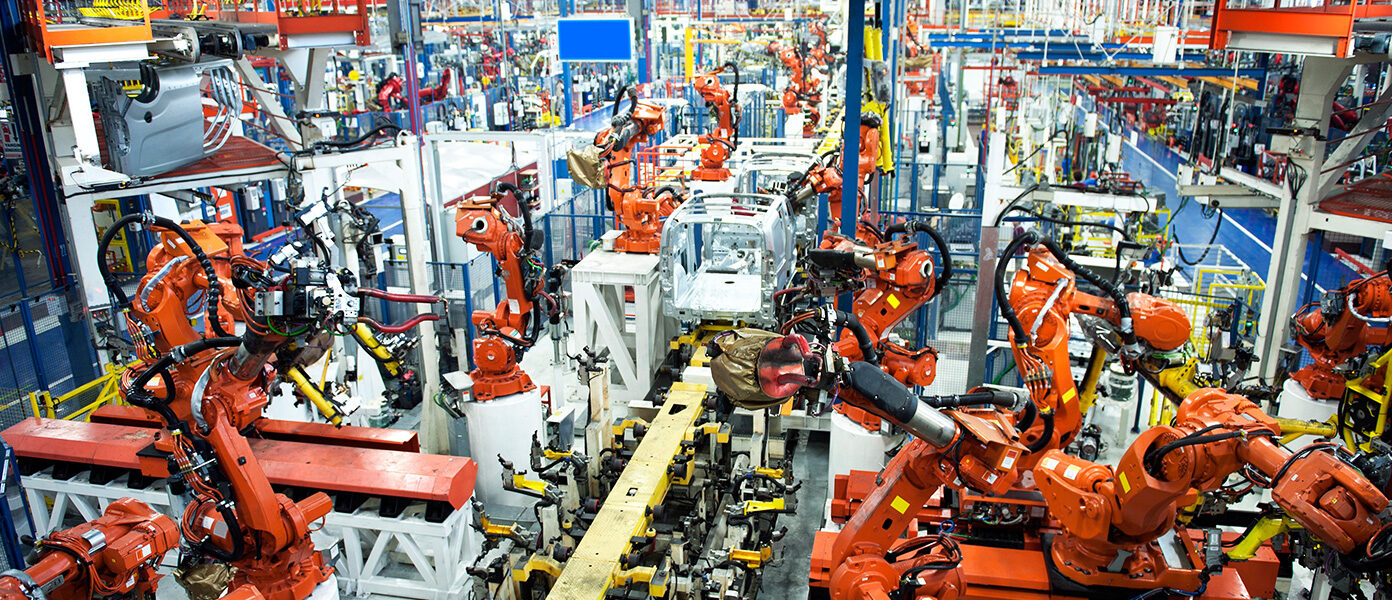Robotics and rising wages in China will not spell the end of global supply chains, merely reshape them
Global supply chains – production spanning multiple companies and countries – have transformed the world economy over the last 30 years, not least in Asia. Their overall effect has been hugely positive, raising incomes in both emerging and developed markets and keeping down inflation.
Further expansion is now challenged by rising wages in China, the biggest player in global supply chains, and by new automation technology which threatens to undermine the role of low-skilled workers.
These challenges won’t be the end of global supply chains, in our view. But they will reshape them, setting them in different directions.
Low-cost manufacturing will shift westwards, from coastal to inland China, to ASEAN, to India and eventually perhaps to Africa

As China’s wages rise we expect the centre of gravity of low-cost manufacturing to shift westwards, from coastal to inland China, to ASEAN, to India and eventually perhaps to Africa. Meanwhile service sector supply chains and networks will gain in importance.
Our research suggests that ASEAN is particularly favoured by many manufacturers, reflecting its combination of low wages in some countries and well-developed infrastructure and logistics in others.
The ASEAN Economic Community, set to start this year, will guarantee free movement of goods, services, capital and skilled labour.
Global supply chains are all about separating different ‘tasks’ in production and doing those tasks wherever is most competitive.
Some tasks done by Koreans in the 1980s and Chinese in the early 2000s will be taken over by robots in the 2020s
In future, some tasks will be done cheaply by robots. This will only happen gradually as the price of automation falls and robots gain capability. But it does mean that some tasks done by Koreans in the 1980s and Chinese in the early 2000s will be taken over by robots in the 2020s.
Low-income countries will need to find tasks where humans are still more effective, including smaller batch work, or work requiring more flexibility or smart pattern recognition.
Automation technology will tend to constrain supply chains, potentially leading companies to ‘re-shore’, or bring production back to their home markets. But new communications technology, also driven by digital developments, points the other way.
Technology will help supply chains grow
By making collaboration across borders easier than ever before, innovations such as smartphones, cheaper video-conferencing and eventually virtual reality conferencing as well as the Internet of things will support further growth in supply chains.
The Internet of things will make it possible for companies potentially to track and monitor goods as they progress through the supply chain anywhere in the world. Developments in big data will make automatic management and optimisation of the process possible in real time.
In future, goods and services will still be ‘made in the world’. But the pathways of global production may end up looking very different
Improved communications technology will also boost supply chains in services. Measured in value-added terms, services already account for the majority of trade though much is embodied in goods. Services themselves are increasingly being traded in new areas such as business process outsourcing, IT, and medical and education services.
New trade agreements under negotiation could also provide support for expanding supply chains in both manufacturing and services. The Trans-Pacific Partnership led by the US and the Regional Comprehensive Economic Partnership led by China – as well as the Transatlantic Trade and Investment Partnership proposed for the US and EU – all aim to liberalise trade in goods and services. Moreover they are aimed particularly at easing the way for supply chains.
In future, goods and services will still be ‘made in the world’. But the pathways of global production may end up looking very different.
Important disclosures regarding content from Standard Chartered Global Research can be found in the Global Research Terms and Conditions.
